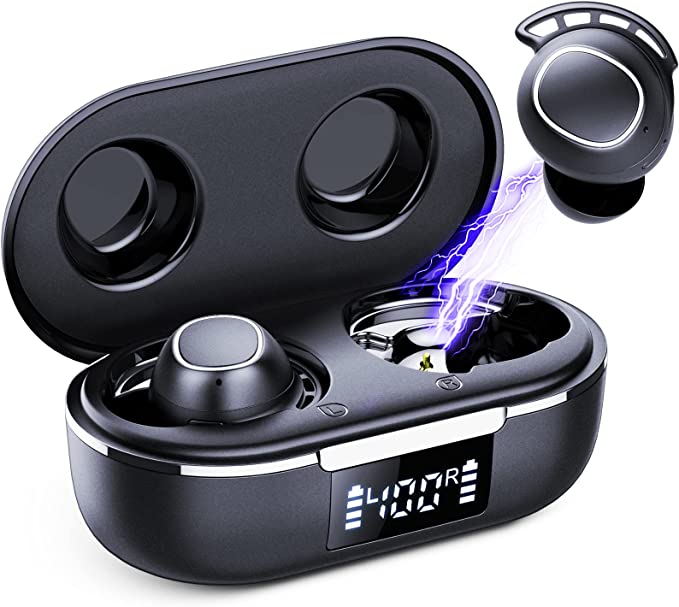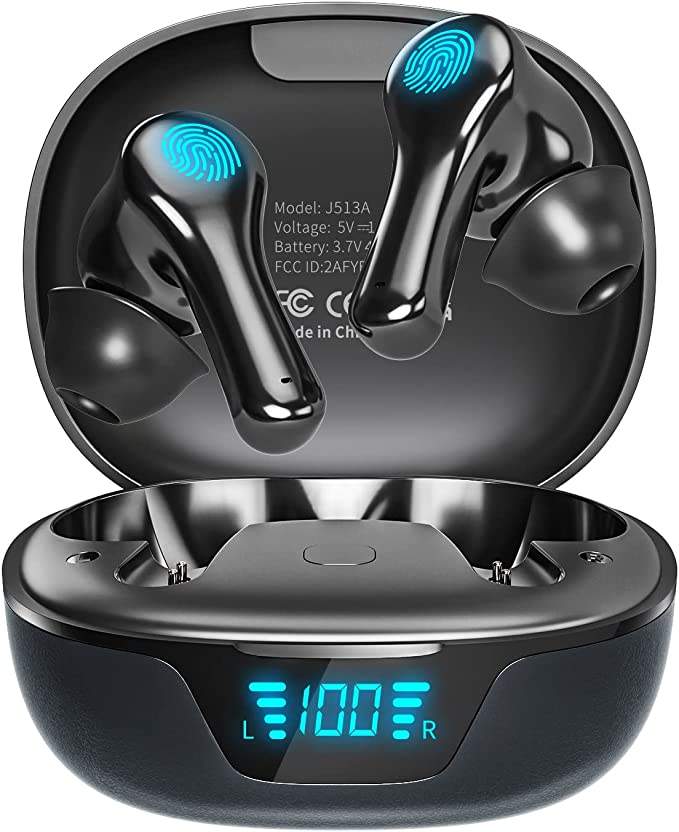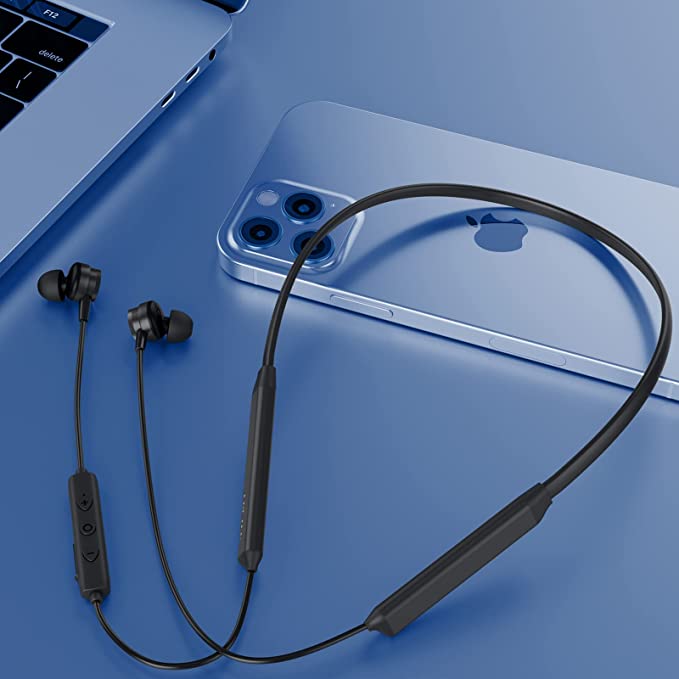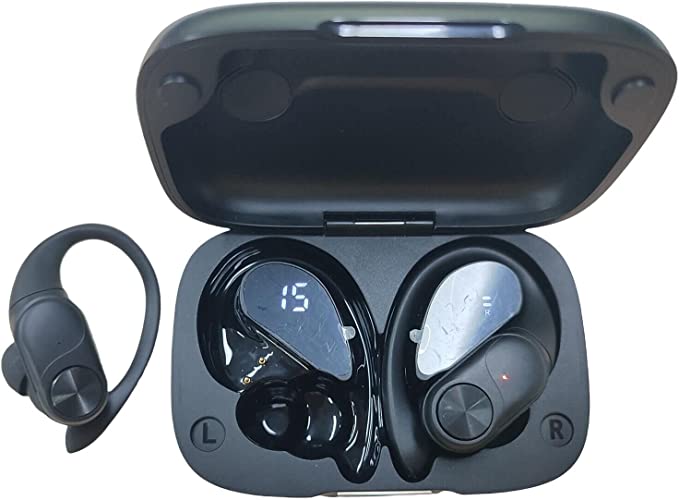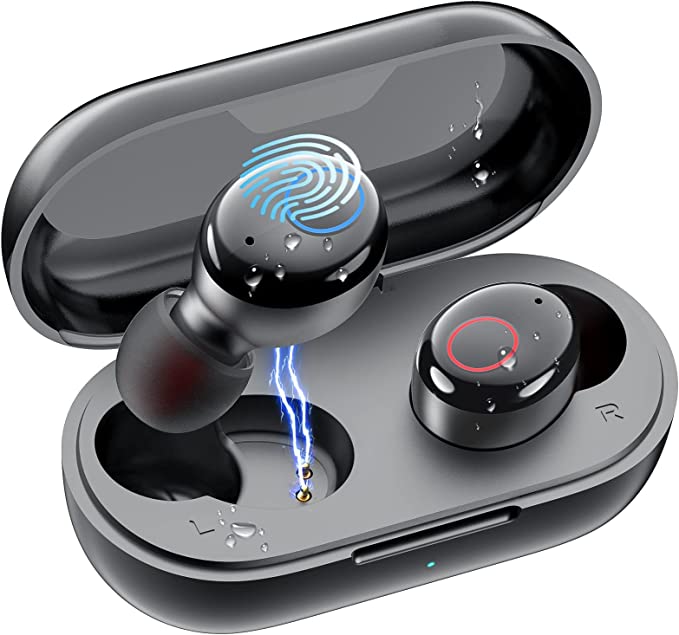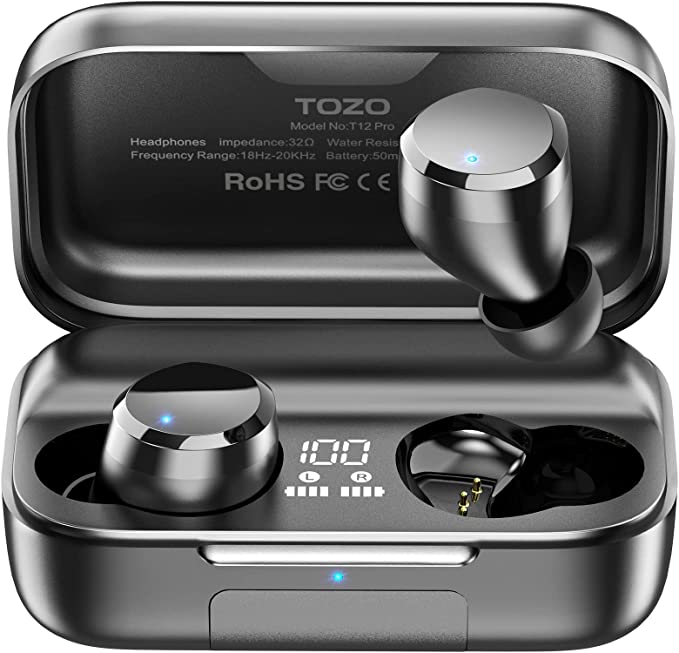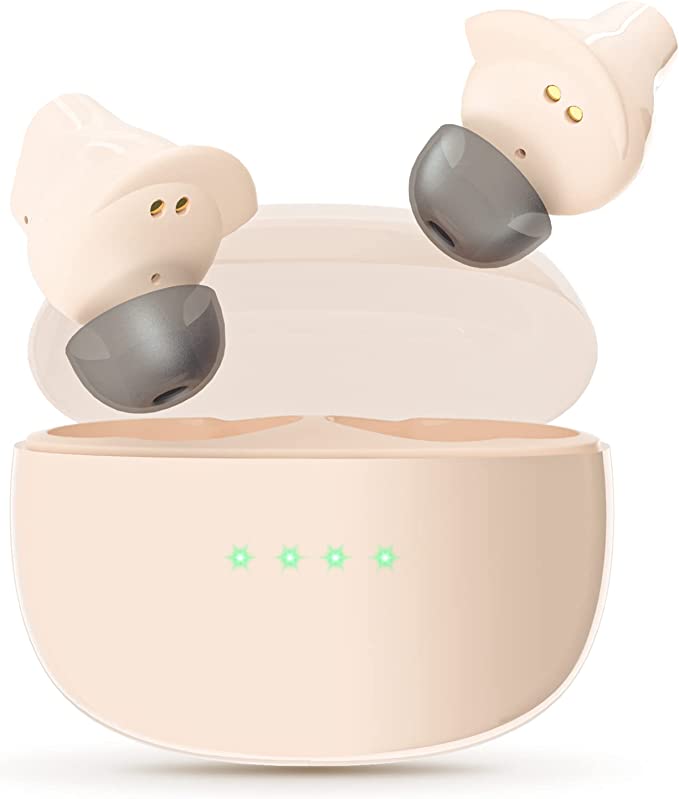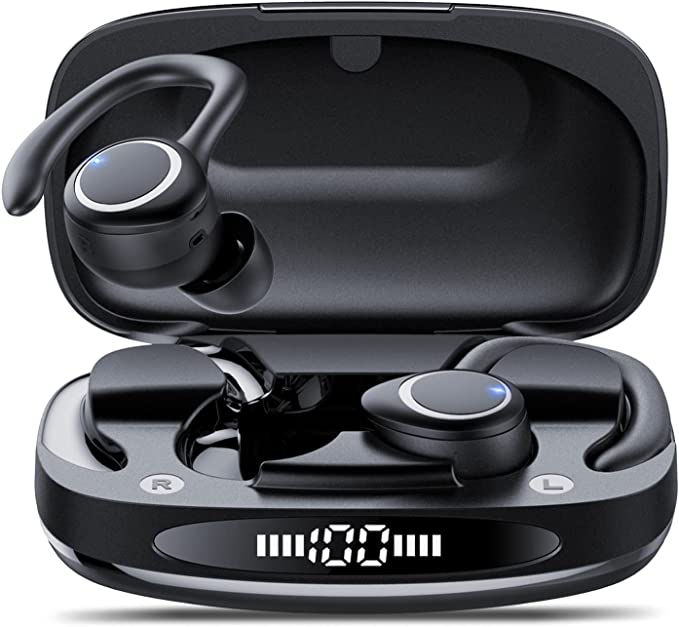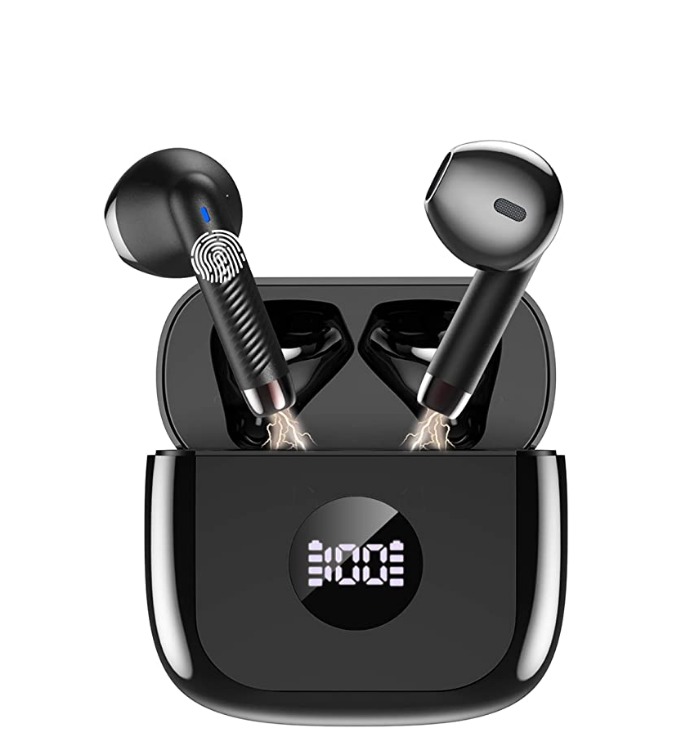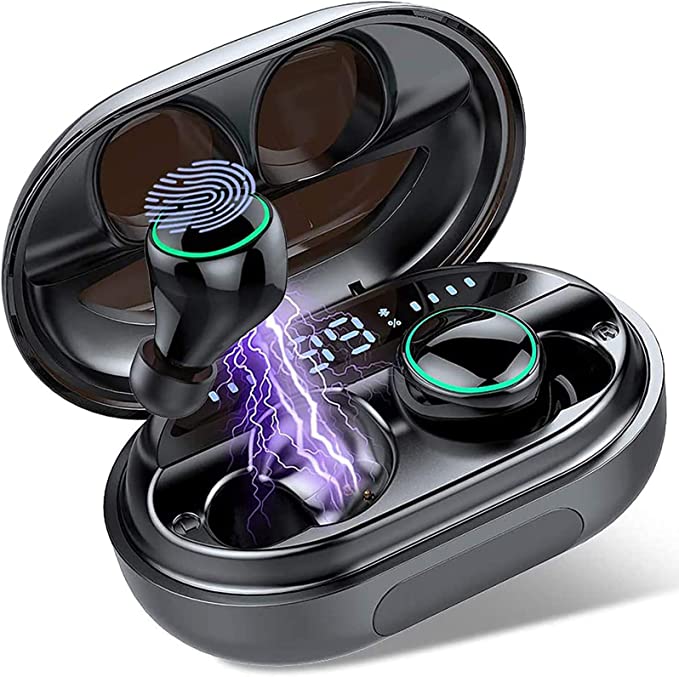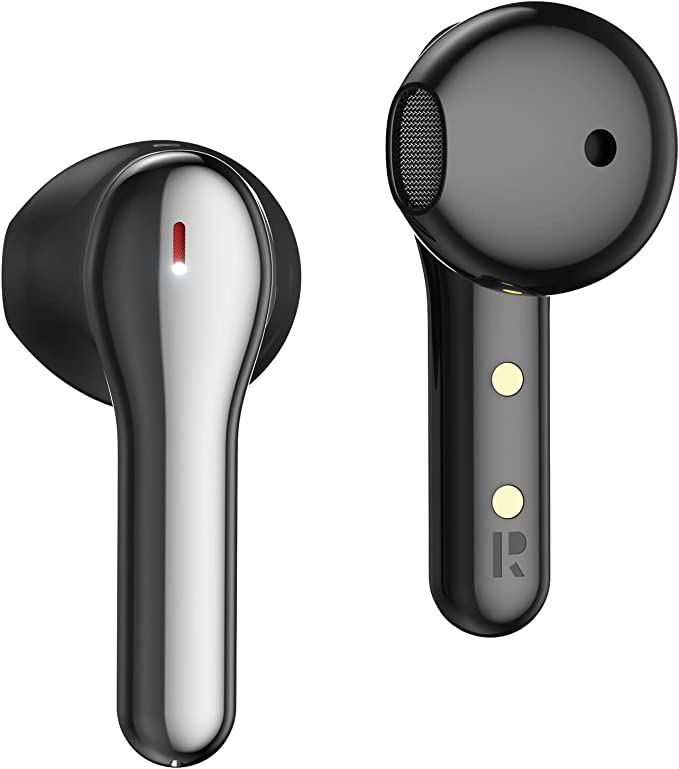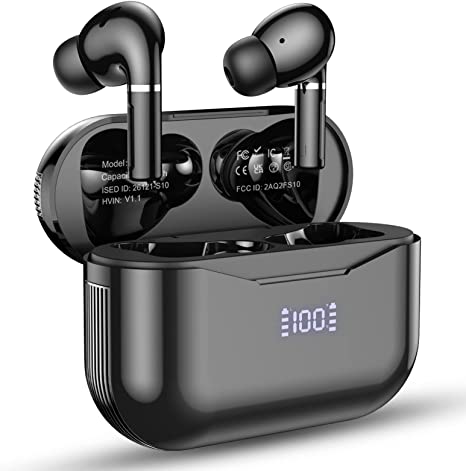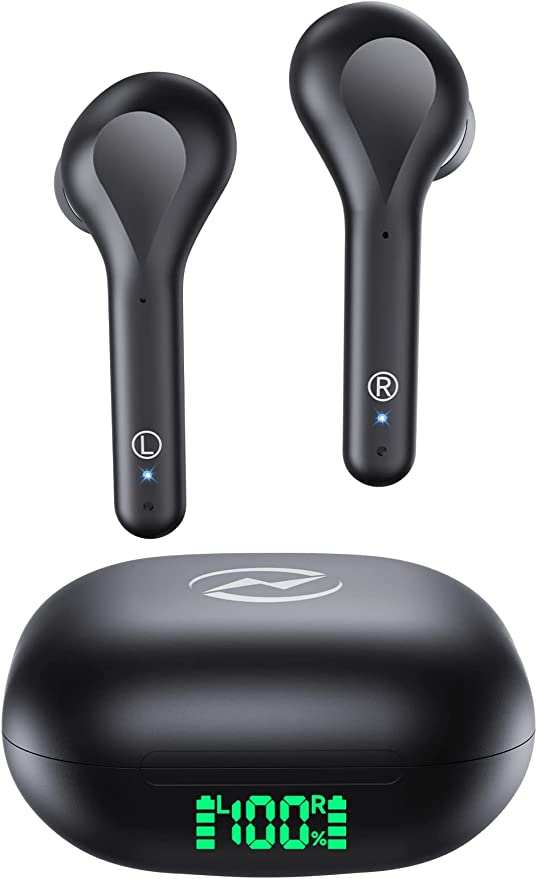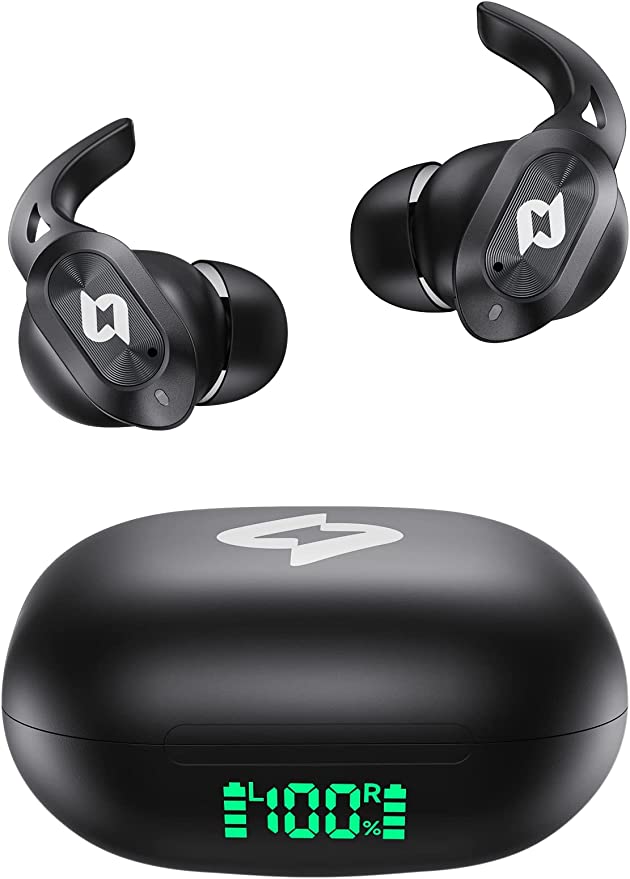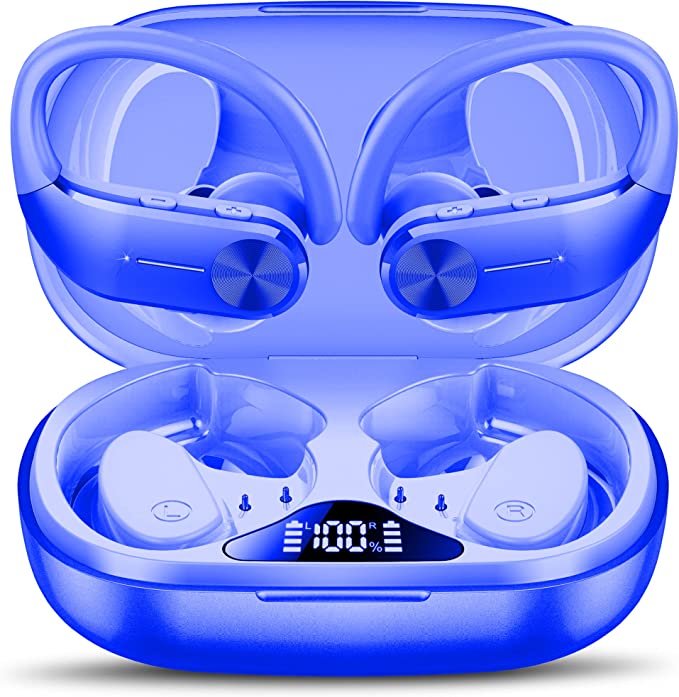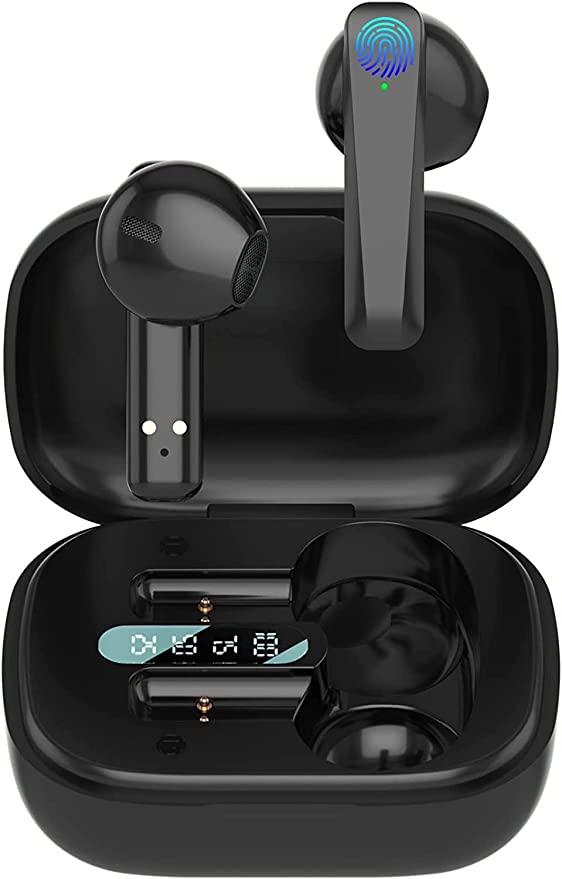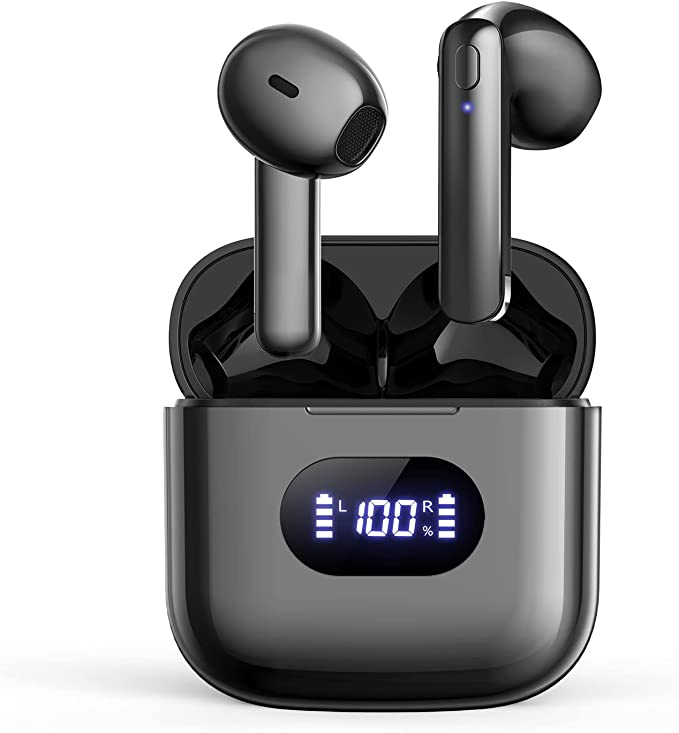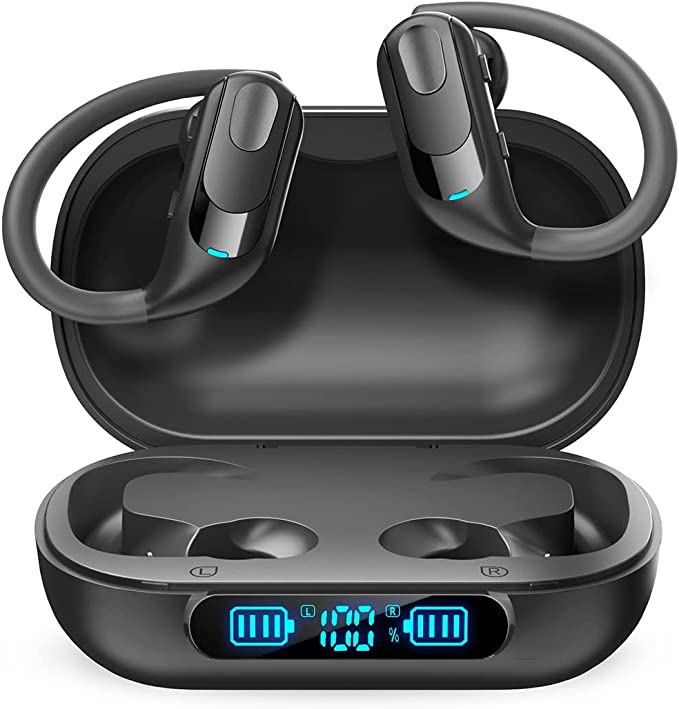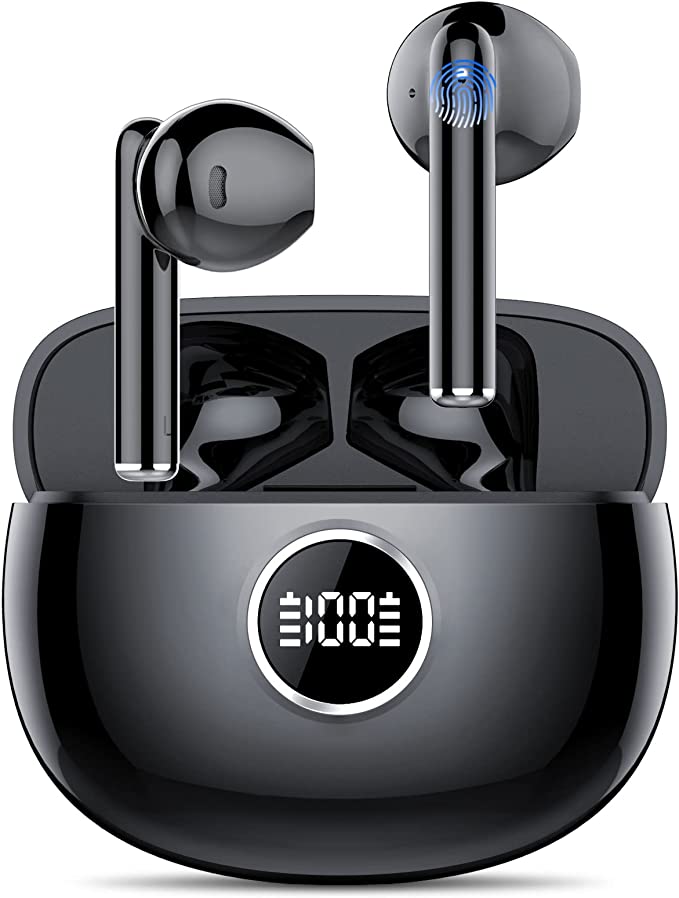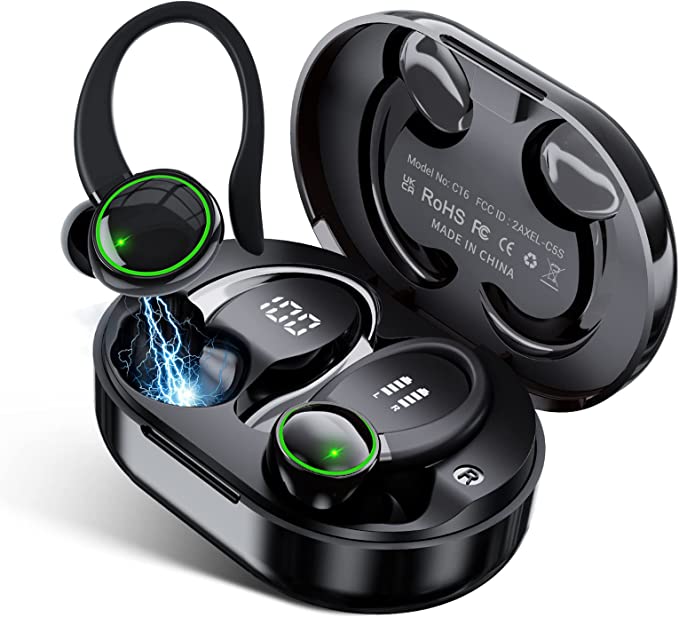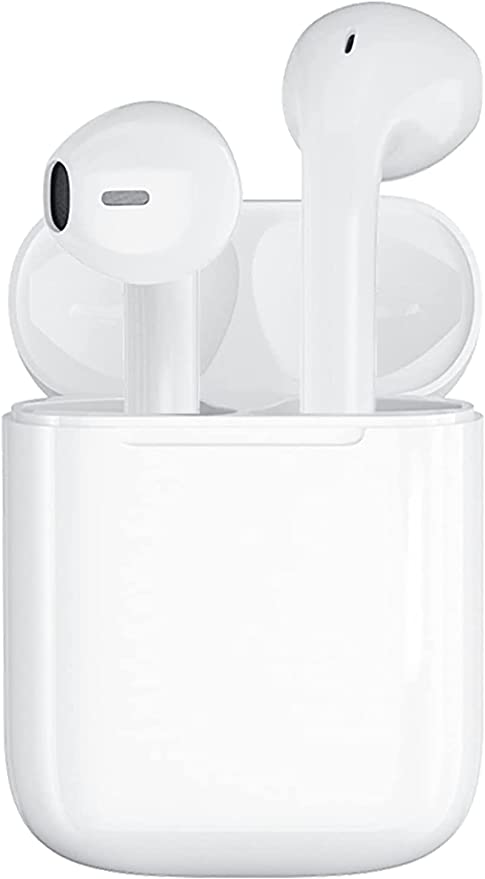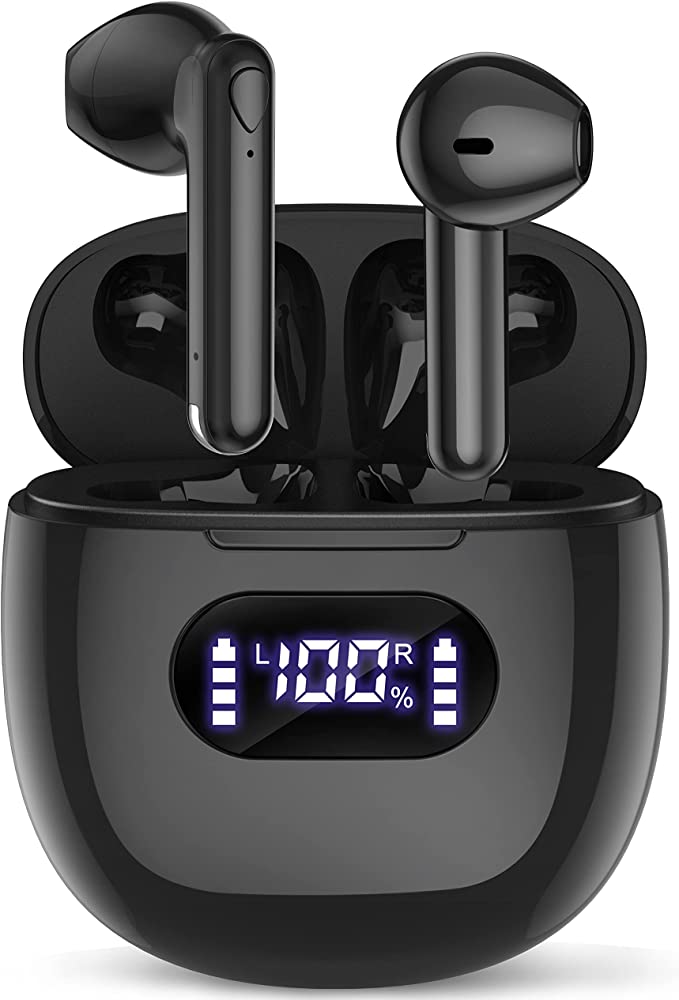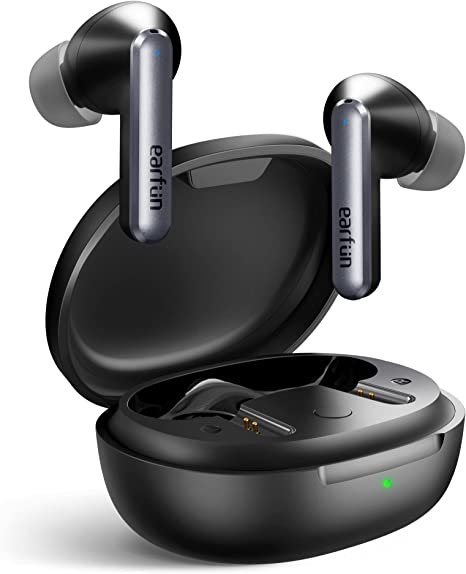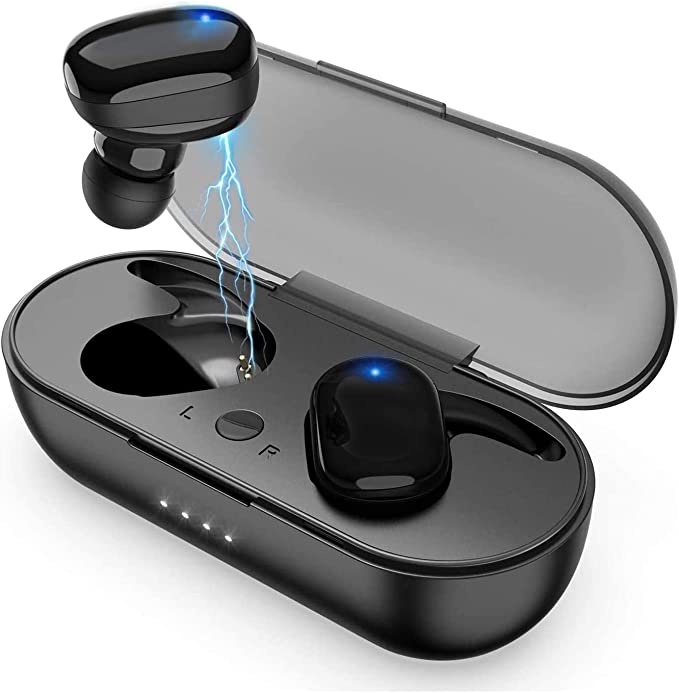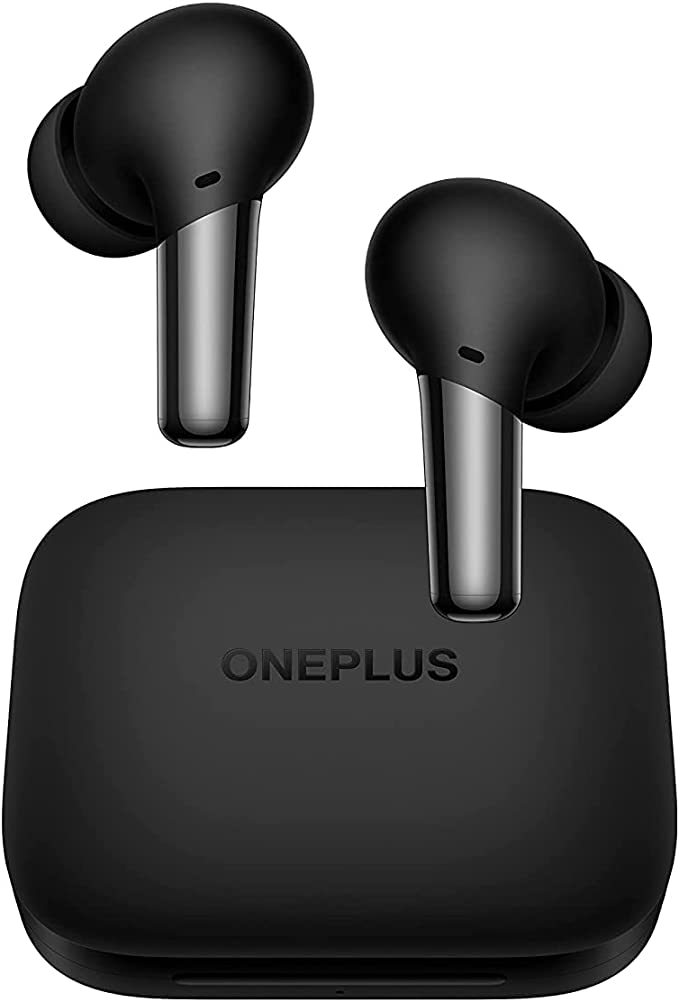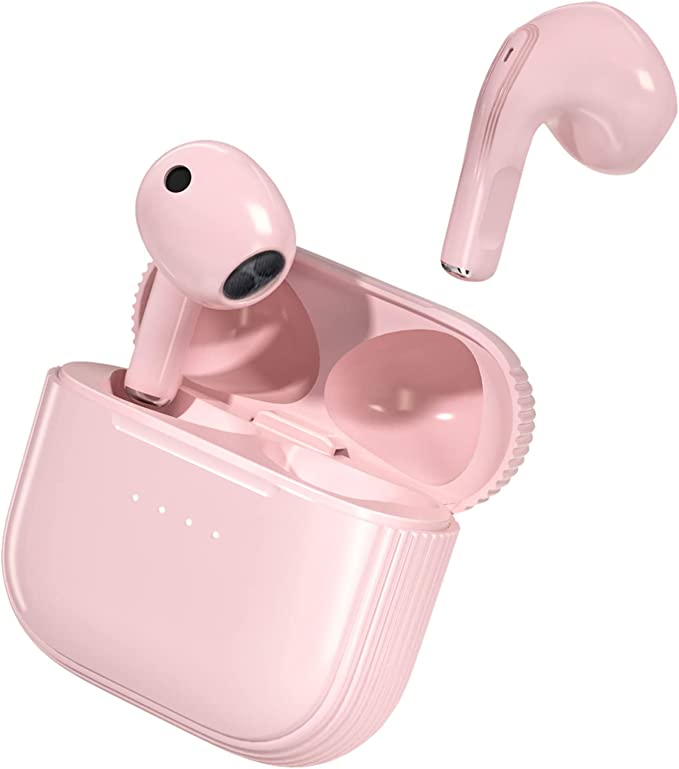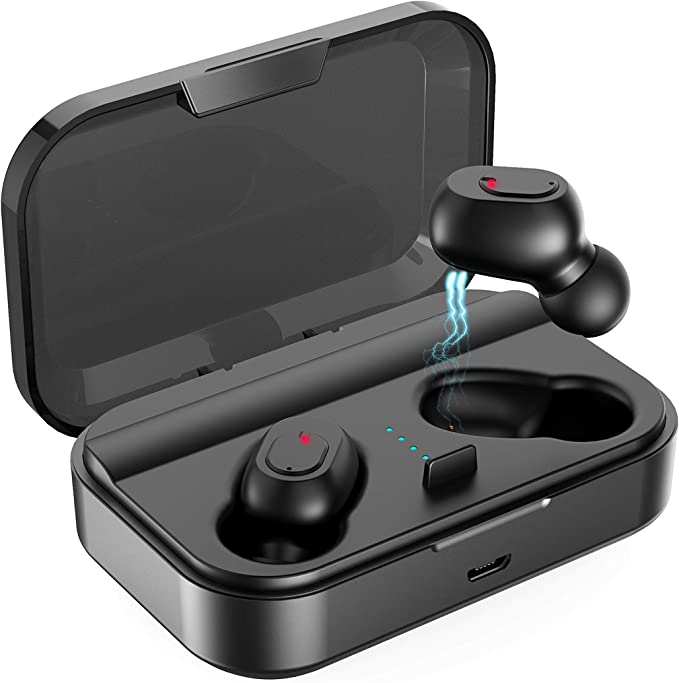EUQQ Q130 Wireless Earbuds: A Must-Have for Music Lovers
Update on June 27, 2025, 7:21 a.m.
Let’s start with a puzzle. On the digital shelf sits a pair of wireless earbuds. The title calls them the EUQQ Q130. Yet, deep in the product details, they’re assigned a different model number: Q24. The official description says they have an “In Ear” design, but a top-rated customer review, complete with photos, insists they “clip onto your ears and do not go into your ear canal.”
When a product can’t seem to decide on its own name or shape, how can we trust its loftier promises, like “Noise Cancelling” or a staggering “42Hrs Playtime”? This isn’t just about one pair of budget-friendly earbuds. This is a perfect case study in becoming a smarter tech consumer. So, let’s put on our detective hats, examine the evidence, and decode what’s real, what’s marketing, and what it all means for you.

The Invisible Handshake: Making Sense of Bluetooth 5.3
Before we could enjoy our music wirelessly, we were tethered to our devices by a perpetually tangled cord that loved getting snagged on doorknobs. The technology that set us free is Bluetooth, a standard named, funnily enough, after a 10th-century Viking king, Harald Bluetooth, who was famous for uniting disparate Danish tribes. In the same spirit, Bluetooth technology unites our devices.
The Q130 boasts Bluetooth 5.3. Think of this as the latest dialect in a long-running conversation. Trying to use an old Bluetooth version in a modern, signal-saturated space—like a gym or a busy coffee shop—is like trying to have a quiet chat in the middle of a rock concert. You’ll get a lot of interference and dropped words (or in our case, stuttering audio).
Bluetooth 5.3, governed by the standards of the Bluetooth Special Interest Group (SIG), is significantly better at holding its connection in these “noisy” environments. It’s also much more energy-efficient. It allows the earbuds to sip power intelligently, rather than guzzling it. For you, this translates into two simple, tangible benefits: a rock-solid connection that’s far less likely to drop out, and a bit more listening time before the buds themselves need a rest.

The 42-Hour Math Game: Where Does the Power Come From?
Next up is that eye-popping “42Hrs Playtime.” This is probably the most common—and honest—bit of marketing math in the earbud world. No, you cannot listen for two straight days. This is a combined figure, and the hero of this story is the charging case.
Imagine the earbuds are sprinters in a relay race, and the charging case is the rest of the team waiting on the sidelines. The earbuds can sprint for a few hours on their own (the product page suggests around 6-7 hours). When they run out of energy, you put them back in the case. This is the handoff. The case, which holds a much larger lithium-ion battery, acts as a portable power bank, or a mothership, to refuel the tiny batteries in the earbuds several times over. The “42 hours” is the total time for the entire relay team.
This is a brilliant piece of engineering that solves one of the biggest user pain points: battery anxiety. For most people, it means you might only need to plug the case itself into the wall once a week, making the entire experience feel truly wireless and hassle-free.

The “Noise Cancelling” File: A Case of Mistaken Identity
Here’s where our detective work gets serious. “Noise Cancelling” is one of the most misused terms in audio. Let’s open the file and separate the facts from the fiction.
First, what these earbuds do have is Passive Noise Isolation. It’s the earmuff effect. By creating a seal in or on your ear, the physical body of the earbud blocks a certain amount of outside sound from ever reaching your eardrum. It’s simple, effective, and requires no power. This is likely what provides the primary sense of isolation.
Second, what these earbuds almost certainly do not have is Active Noise Cancellation (ANC). True ANC is a technological marvel. It uses tiny microphones to listen to the ambient sound around you, then instantly creates an opposite soundwave—an “anti-noise” wave—to cancel it out. Think of it as adding a -1 to every +1 of noise, resulting in zero. This is complex, power-hungry, and found in more expensive headphones. In fact, one of the most helpful user reviews for the Q130 states it plainly: “These earbuds are not designed to be noise cancelling.” This is our smoking gun.
So, what else could the claim mean? It likely refers to Environmental Noise Cancellation (ENC) for the microphone. This technology uses multiple mics to focus on the sound of your voice and actively filter out background noise—but only for the person on the other end of your phone call. It makes you sound clearer to them. It’s a great feature for calls, but it doesn’t cancel any noise for you, the listener.

A Splash, Not a Swim: Decoding “Waterproof”
Finally, we have the bold claim of being “Waterproof.” In the world of consumer electronics, this word without a specific rating is more of a guideline than a guarantee. To standardize this, the industry uses the Ingress Protection (IP) rating system, defined by the International Electrotechnical Commission (IEC 60529).
An IP rating looks like this: IPX7. The ‘X’ means it wasn’t tested for dust, and the second number is for water.
* IPX4 means it’s resistant to splashes from any direction (good for sweat and light rain).
* IPX7 means it can be submerged in 1 meter of water for 30 minutes.
Since the EUQQ Q130’s page doesn’t specify a rating, we must be cautious. The “Waterproof” claim should be interpreted as being closer to “water-resistant.” It’s built to survive your sweatiest workout or a jog in a light drizzle. But taking them for a swim? That’s a risk you’d be taking on your own.
The Bottom Line: The Art of the Budget Compromise
So, what have we discovered? The EUQQ Q130 earbuds are a classic example of engineering on a budget. They are not magical devices that defy physics, but rather a series of smart compromises.
They deliver on the promise of a stable Bluetooth connection and genuinely impressive combined battery life—two of the most important features for everyday users. The comfort seems good, though potentially not for all ear sizes. The sound quality is likely perfectly adequate for casual listening, podcasts, and calls.
The compromises lie in the marketing language. The “Noise Cancelling” is passive isolation and call filtering, not the immersive silence of ANC. The “Waterproof” claim is best understood as sweat-resistance. And the identity crisis over the model name and fit suggests a less-than-polished product information pipeline, which is common in this hyper-competitive market segment.
Ultimately, a product like the Q130 isn’t trying to compete with headphones that cost five or ten times as much. It’s designed to offer the core benefits of the wireless experience at an exceptionally accessible price.

Your New Tech Detective Toolkit
The puzzle of the EUQQ Q130 is solved. But the real prize is the set of tools we’ve used. The next time you’re shopping for any piece of tech, you can use this same thinking:
- Question Vague Terms: Be skeptical of words like “Pro,” “Hi-Fi,” “Waterproof,” or “Noise Cancelling” without specific data (like an IP rating) to back them up.
- Understand the Core Tech: Know the difference between combined battery life and single-charge battery life, or between passive and active noise cancellation.
- Read the Reviews Critically: Look for patterns. If multiple people mention the same flaw or benefit, it’s likely true. Pay special attention to reviews that contradict the product description.
- Appreciate the Compromise: In tech, price is almost always a direct reflection of features and quality. Understand what features are most important to you and where you’re willing to accept a trade-off.
Being a smart consumer isn’t about finding a flawless product for no money. It’s about understanding precisely what you’re paying for—and what you’re not.
